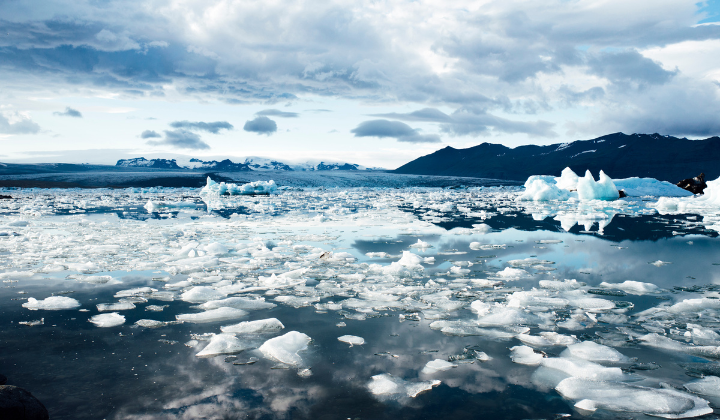
– Manuscript –
Not too long ago, 41-year-old Garrett Fisher flew in a small airplane close to the surface of Europe’s largest glacier, which is in Norway.
A glacier is a huge area of snow and ice that moves slowly down a mountain side.
In that environment, the plane carrying a man who chases glaciers seemed almost like a toy.
Fisher combines two activities he loves, flying and photography, trying to photograph every glacier on Earth. He wants his photos to show the beauty of glaciers before some of them disappear.
Scientists say many glaciers are melting or getting smaller because the Earth’s average temperature is increasing. Information from the European Environmental Agency, or EEA, says glaciers in the Alps Mountains have lost about half of their volume since 1900. The melting has gotten faster since the 1980s.
The EEA said that by 2100, the size of European glaciers could decrease by between 22 percent and 84 percent. Another EEA estimate suggests that up to 89 percent could melt. The EEA also says nearly all small glaciers in Norway will likely disappear.
Roderik van de Wal is a glacier expert at Utrecht University in the Netherlands. He said that scientists have good historical records of the size of glaciers in Europe and New Zealand. He added that those records show that glaciers are now melting faster.
For Fisher, this means that time is running out. The melting pushes him to try to photograph the glaciers before it is too late.
As a child, Fisher lived next door to a small airport in the state of New York. His grandfather was a pilot and took Fisher on plane rides when he was a young child. The older man would tell him: “Whatever you set your mind to, you can do.”
In the late 1990s, a friend told Fisher that the world’s glaciers were disappearing. This pushed him to combine his love of flying and photography to photograph the Earth’s remaining glaciers. He believed he was in a race against time.
He believes his photographs could be of great value to future generations. So, he has launched Global Glacier Initiative, a non-profit group to support and show his work. He plans to open his photos to the public for research.
Fisher flies a small plane called a Piper Super Cub which can carry two people. The plane smells of oil and feels like an old car. It is his choice for the dangerous flying over the glaciers.
“The weather’s bad, extremely cold, the winds are very strong and the flying’s extremely technically challenging,” Fisher said. “And to photograph glaciers, we’re getting very close to all of this action. So, it requires a lot of skill, time and determination.”
He added: “I’ve been told by many pilots that I’m crazy.”
He has detailed plans in case of a crash on a glacier. He estimates he can survive for about 24 hours if he goes down. And he has measured the tail of the plane to be sure he can stay inside it while waiting for help.
Some people would ask, why risk flying over glaciers when satellites already give pictures of them? Fisher said that satellite images don’t capture the beauty of glaciers the way his photos can. His photos show the colors, shapes, and shadows as the light from the sun hits the glaciers.
“Science has all of the data we need…The problem is, it’s not beautiful,” he said.
Fisher has paid for his glacier photography with his own money. But it is costly. Money is running out and Fisher is looking for people who will help support his work.
He hopes his photos will make people care more about glaciers. He is chasing the perfect image; one so beautiful it can make people and policymakers act.
“We can live without them. We will live without them,” Fisher says. “However, it hurts us to lose them.”
Words in This Story
crazy –adj. not sane or not thinking clearly
volume –n. the length, width and height of an object
challenging –adj. difficult in a way that is interesting
determination –n. a quality that makes someone continue doing something although it is difficult
*This article has been edited and reprinted from VOA Learning English with permission from Voice of America (VOA) for use in English language materials.
